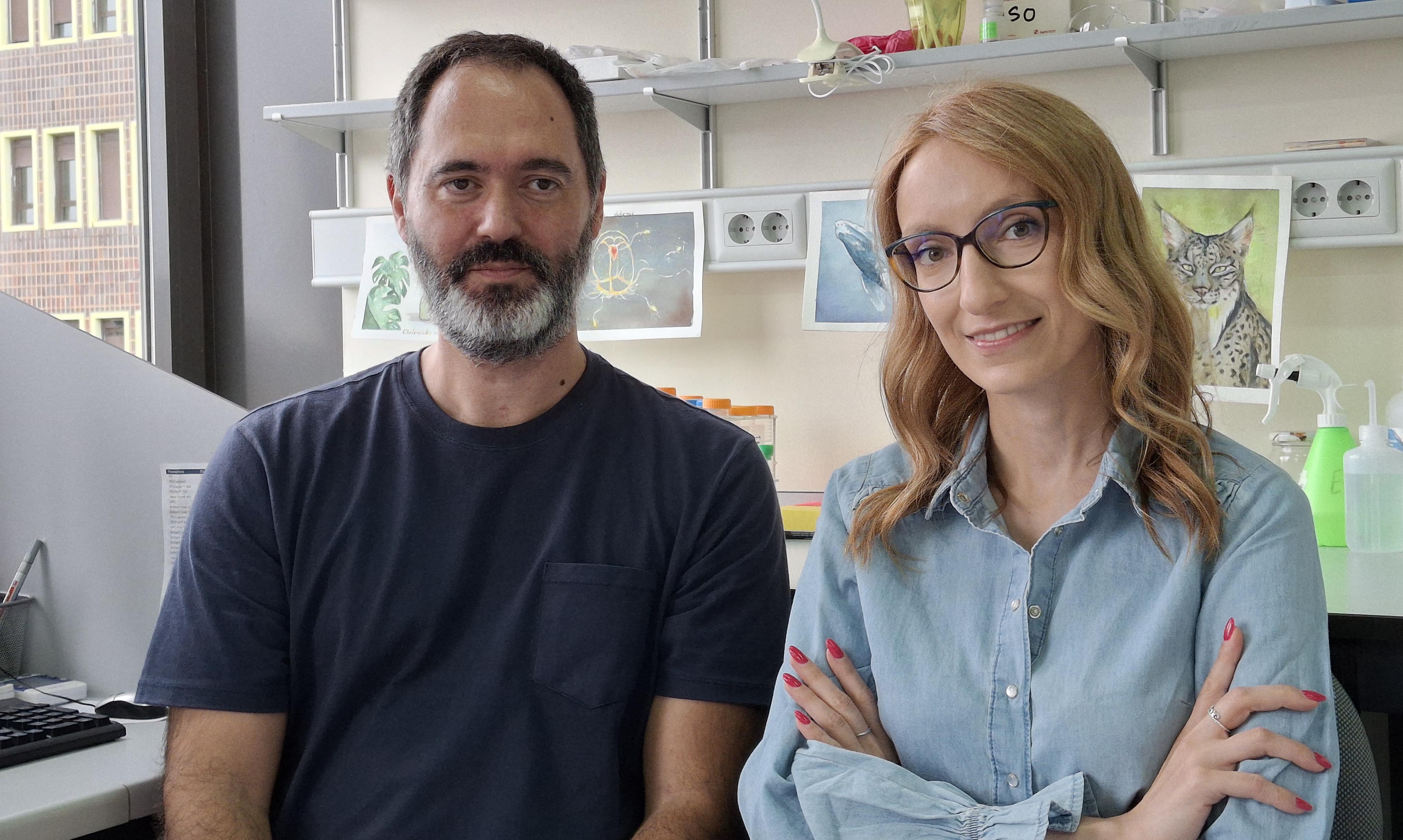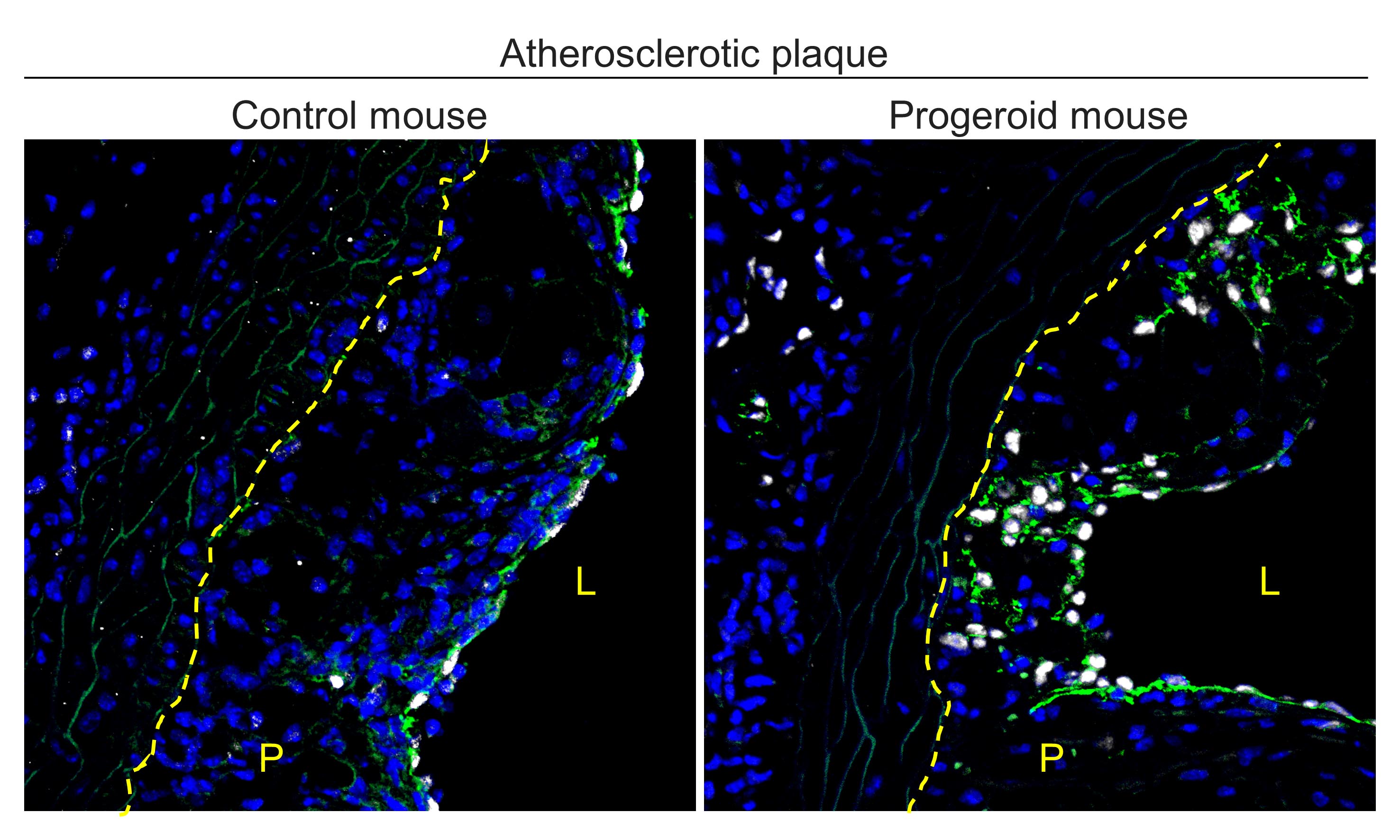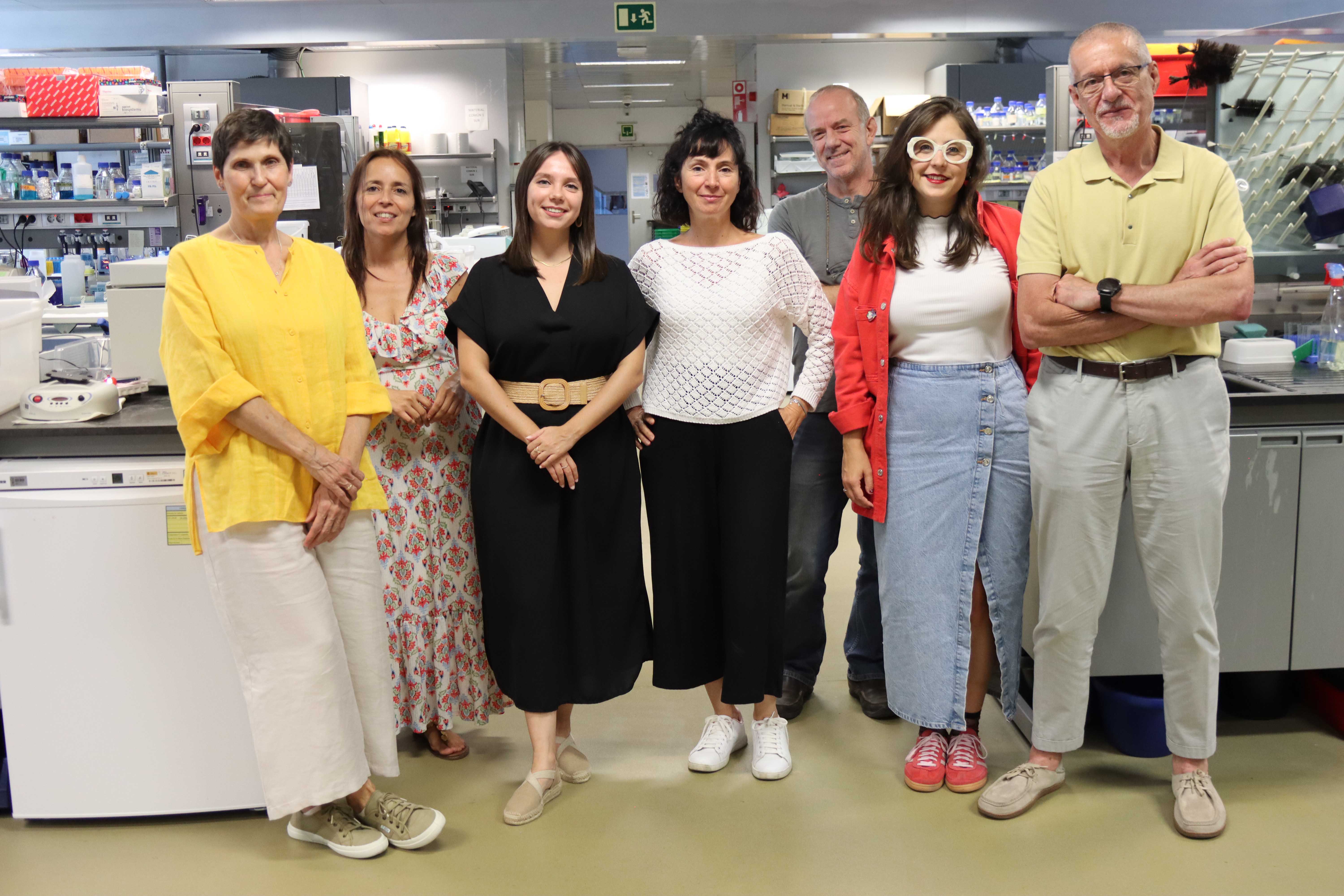Circulation: A new mechanism of early-onset atherosclerosis in a premature aging syndrome
The new study, published in the journal Circulation, opens a new avenue of research into treatments for the atherosclerosis associated with progeria
Scientists at the Centro Nacional de Investigaciones Cardiovasculares (CNIC) have identified the process of endothelial-to-mesenchymal transition (EndMT) as a novel mechanism in premature atherosclerosis in progeria. The study, published in the journal Circulation, also proposes a new therapeutic target for this disease. The study was led by Dr. Vicente Andrés, leader of the Molecular and Genetic Cardiovascular Pathophysiology group at the CNIC and a principal investigator in the Spanish cardiovascular research network (CIBERCV), and Dr. Magda Hamczyk, a research fellow at the University of Oviedo and a CNIC visiting scientist.
Atherosclerosis is characterized by the abnormal accumulation of cells and cholesterol in the arterial wall. These lesions, called atherosclerotic plaques, result in the hardening and obstruction of the arteries; moreover, rupture of an atherosclerotic plaque can cause the formation of thrombi that can trigger a life-threatening heart attack or stroke. Given that cardiovascular events of this type are the leading cause of death in the world, “research in this area is essential for increasing the life expectancy of patients with atherosclerosis and preventing its complications,” said Dr. Vicente Andrés.

The formation of atherosclerotic plaques progresses silently for many years and usually only begins to produce symptoms from mid-life. However, there are diseases that are characterized by an accelerated atherosclerosis linked to premature death. One of the most remarkable of these diseases is Hutchinson-Gilford progeria syndrome, also known as progeria, an extremely rare genetic disease characterized by premature aging during childhood and adolescence. Patients with progeria die at an average age of 14.5 years, mostly from heart attack, heart failure, or stroke.
Endothelial dysfunction in progeria
In previous work, Dr. Vicente Andrés’s group, together with Dr. Carlos López-Otín and his team at the University of Oviedo, generated mice with symptoms similar to those of patients with progeria, including early-onset atherosclerosis. This earlier work also demonstrated that one of the main causes of the accelerated atherosclerosis associated with this syndrome is the death of smooth muscle cells in the artery wall.
The new study published in Circulation investigated how changes in smooth muscle cells affect the overlying layer of endothelial cells that separates the artery wall from the bloodstream. Co-first author Dr. Rosa Nevado explained that “in progeria, the loss of smooth muscle cells induces a series of pathological alterations in the neighboring endothelial cells.” Dr. Hamczyk added that “these changes include the recruitment of immune cells and increased permeability to LDL (known as ‘bad’ cholesterol), processes that can accelerate the formation of atherosclerotic plaques.”
The authors also conducted an in-depth analysis of the molecular mechanisms of EndMT in progeria
But Dr. Andrés emphasized that the most startling change in endothelial cells from progeroid mice is the hyperactivation of phenotypic modulation via EndMT. “This process consists of the loss of the typical features of endothelial cells and the acquisition of properties typical of mesenchymal cells that accelerate the development of atherosclerosis.”
A new therapeutic target
The authors also conducted an in-depth analysis of the molecular mechanisms of EndMT in progeria. As Dr. Nevado explained, “The TFGβ1–SMAD3 signaling pathway is hyperactivated in the arteries of mice with progeria, and the inhibition of this pathway with a drug called SIS3 alleviated the symptoms of vascular disease.” Dr. Hamczyk concluded, “this study describes new cellular and molecular mechanisms involved in atherosclerosis and proposes a new therapeutic target for this disease.”
 Dr. Andrés stressed the importance of investigating rare diseases like progeria, because this “can help in the search for treatments not only for these devastating diseases but also for processes, like atherosclerosis, that affect the wider population and are major causes of ill health and mortality.”
Dr. Andrés stressed the importance of investigating rare diseases like progeria, because this “can help in the search for treatments not only for these devastating diseases but also for processes, like atherosclerosis, that affect the wider population and are major causes of ill health and mortality.”
The study was funded by the Ministerio de Ciencia, Innovación y Universidades (MICIU)/Agencia Estatal de Investigación (AEI) (/10.13039/501100011033) and ERDF/EU (PID2022-141211OB-I00). The CNIC is supported by the Instituto de Salud Carlos III (ISCIII), the MICIU, and the Pro CNIC Foundation and is a Severo Ochoa Center of Excellence (grant CEX2020-001041-S funded by MICIN/AEI/10.13039/501100011033).











